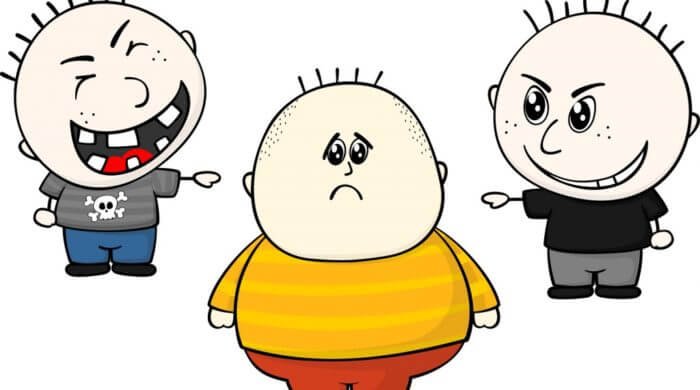
Obesity is an important health problem in childhood. The regulation of body fat begins in the womb, after half the time in the womb the fat tissue increases. At birth, 16% of body weight is adipose tissue. While adipose tissue increases in infancy, it is 12-15% in 5-6 years. While it drops to 11% in men aged 10-15 years, it rises to 23% in girls. Nowadays, the frequency of obesity is increasing in every age group. the eating habits of modern life and the decrease in physical activity of children (television, computer). A third of overweight children are obese in overweight adolescents (children after puberty), 80% are obese in adulthood, and 30% of overweight adolescents are obese as children.
The cause of obesity is mainly due to overeating and this type of obesity "Simple obesity" or "Exogenous obesity" It denotes. Children with exogenous obesity are also taller than their peers. In some cases, a medical problem can be identified as the cause of obesity. Obesity occurs due to an illness that "Pathological obesity" is often accompanied by short stature.
Causes of overweight:
1 – Family reasons: If both parents are overweight, the chances of children being overweight are 80%.
2- Environmental factors: Limitation of physical activity is a common problem among children living in urban areas. Television and computers can be counted. Both of these methods limit the child’s activity and reduce energy consumption.
3- Nutrition: The obese child is not always a child who consumes more than his peers, but a child who consumes less energy. If you reduce the frequency of your diet, eat a meal or two, and eat high-calorie foods that are high in carbohydrates and fat, your risk of gaining weight increases.
4- hormones factors: Some hormonal causes such as diabetes, thyroid disease and adrenal disease can also lead to obesity. For this reason, every obese child must be examined by a specialist in child hormones.
Diseases in obese children:
– Obesity affects various organs and systems in children and adolescents. Studies have shown that 10-30% of overweight children suffer from high blood pressure. Overweight children have an increase in bad cholesterol (LDL cholesterol) and a decrease in good cholesterol (HDL cholesterol). Depending on the increase in oils; Cardiovascular disease can increase the incidence of liver disease and gallbladder disease.
– Obese girls can develop early menstruation due to early bone development. In addition, menstruation and various menstrual disorders are among the most common complaints.
– Overweight children and adolescents due to weight gain; Overloading the joints can also cause various orthopedic diseases.
– Overweight reduces the ability to move in children by disrupting respiratory function and increasing the strain on the heart. The inactivity associated with this reduction further reduces energy consumption and forms a vicious cycle.
– Rapid weight gain is an important risk factor for the development of common respiratory diseases. Patients with severe obesity can experience respiratory arrest during sleep and cause serious problems.
– Obesity also causes some mental disorders to develop. These children can become more introverted by avoiding social relationships, and the approach to the opposite sex can be disturbed.
The treatment of obesity should be done in collaboration with a nutritionist, a doctor and a patient. The main goal of the treatment is to achieve lifelong weight control and make the right diet and exercise a lifestyle. To do this, it is necessary to make enough energy restrictions to ensure normal growth. Eating habits and a change in lifestyle should involve the whole family. Because weight loss is inconvenient, you should be prepared for a continuous and slow weight loss program.
The two main points in the treatment of obesity: The energy absorbed should be reduced and energy consumption increased.
The child’s diet should be tailored to each child and reflect the child’s and family’s eating habits. When preparing the diet, taking into account the growth and daily activity of the child, the necessary nutrients should be taken into account. Obesity treatment lasts a long time and requires patience. Family support is very important. The diet should consist of main and snacks. Never skip meals. A large meal should be preferred instead of frequent small meals. Growth is also taken into account when determining the child’s energy needs. Care should be taken to ensure that iron, calcium, zinc and vitamins are not missing in the diet.
Physical activity for energy consumption is extremely important in the treatment of obesity. Therefore, diet therapy must be carried out with exercise. The exercise program should also be tailored individually. First, there are mild exercise programs given, and then the frequency and intensity of the exercise is increased. The daily training time should be at least 30 minutes. Walking, jogging, cycling, aerobics at home and dancing are simple types of exercises (using stairs instead of lifts is an exercise). In order for the child to be successful in treating obesity, both eating and physical activity should be converted into behavior and lifestyle. Exercise not only increases energy consumption. It also prevents that development of Diabetes and cardiovascular diseases by increasing insulin sensitivity and good cholesterol (HDL).
Dr. More professionals named Bülent Öztürk
Acıbadem Bursa hospital
Specialist in children’s health and diseases
RELATED ITEMS
-

Diabetes in children – general
Diabetes is a disease that threatens everyone, young and old. Dr. Neslihan Güngör, specialist in pediatric endocrinology at Anadolu Medical Center 14….
-

Childhood obesity: it is taken seriously?
Childhood obesity is not a cosmetic problem or something the child will simply grow out of. Overweight children tend to do this,…
-

Stress is the most important problem in today’s societies, which live quickly and have no time to rest. We are all stressed out…
-

Childhood obesity – parent compass – your magazine for pregnancy, baby – family
Some kids have unhealthy eating habits. While some eat little or no food, others eat much more than […] obesity…
